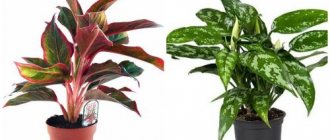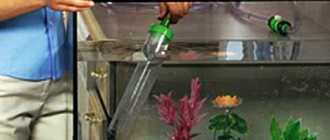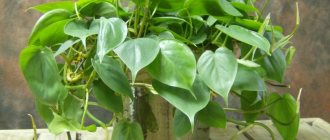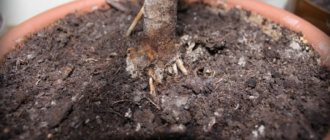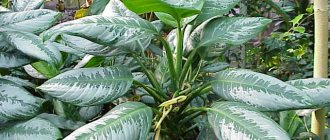Imagine that you are reading a magical book with photos that will make your soul freeze. Page after page takes you to unknown lands, tells a story about something wonderful and how beautifully this world works. Who is the author of this work? Nature. And the name of the masterpiece is “Herbarium of leaves with flowers.” Let's read this book together to understand who it is intended for? And for those who have a desire to try their hand at it and help the Author continue this grandiose work, we invite you to learn how to make a herbarium with your own hands.
Let's find out together: what a herbarium is and what its goals are; little secrets of the herbalist: suitable plants, what conditions for drying a particular plant, how to distribute the herbs; how to collect a herbarium and what are the rules for its design.
Collecting and decorating a herbarium with your own hands
How to make a herbarium with your own hands? You should study the sequence of actions and follow it exactly. The herbarization algorithm was developed by Carl Linnaeus back in the 18th century. Since then, the rules for collection, drying and storage have not changed.
Bouquet of dried flowers
Dried flowers in the interior
What is necessary?
You can store the herbarium in a special album with files, which will contain not only dried plants, but also inscriptions about their origin. Albums can be purchased in special stores or made with your own hands. To do this, you need to take either very thick sheets of paper or cardboard and place them in files. There is no need to fasten them together. It's better to buy a regular binder. In addition, you can use dried plants as bookmarks in a book or create paintings or panels from them.
Some craftsmen also use herbariums to decorate boxes or plates, or make postcards from flowers.
How to properly collect plants for a herbarium?
You should clarify which plant species in your geographic region have rare and protected status. You should not collect a herbarium for personal use from protected specimens.
It is better to collect plants in dry weather. To sort by morphological characteristics, specimens are dug up along with the roots. Samples are selected that are healthy and intact. Roots and stems that are too thick and inconvenient for drying are cut lengthwise.
Shoots with buds and greenery are cut from bushes and trees. If the plant had to be dug up, it is cleared of soil residues.
Herbarium in the living room interior
Herbarium in the living room
Classification
A classification of herbariums can be made into several subgroups.
- Special. Such a herbarium is intended for a specific purpose. For example, a teacher at school can ask for the creation of a thematic selection of plants based on the material covered.
- Periodic. Most often, this distribution is done by season. For example, in the spring you can dry bird cherry shoots or cherry blossoms, in the summer - flowering medicinal or ordinary plants, in the fall - multi-colored leaves or bunches of rowan, and in winter - unusual branches from trees.
- Systematic. Most often, such herbariums are compiled on the basis of already collected plants. But they are placed in alphabetical order or by type. That is, everything is gradually being systematized.
- Thematic. Such a herbarium consists of certain specimens of species. Medicinal plants are included separately, such as chamomile, mint, sage or wormwood. Weeds or cereals can also be selected for the collection.
- Floral. Such a herbarium is collected in a specific place of residence.
- Morphological. In this case, an individual plant is collected in parts. In addition, you can collect the same plant at different periods of its growth.
How to properly dry collected samples?
To dry plants correctly, a special device called a herbarium press is used. It consists of two planks, along the edges of which there are holes for strands. Prepared samples are placed in large quantities between planks, which are tied together with ropes. One herbarium press holds about 50 specimen inserts. The result is something like a thick, bound book. The insert sheet (also called a shirt), in which the plant is embedded, along with the label, is placed in a press, lined with sheets of paper on both sides.
Plants that are too juicy are dried after scalding them with boiling water. During the day, the herbarium press is taken out to dry in the sun. At night they are returned to the room. It is recommended to replace the sheets that line the plant inserts with dry ones at least once a day. How can you tell if a plant is already dry? Leaves and flowers should be fragile in appearance and not sag in an upright position.
To obtain a herbarium of mosses or lichens, the sample is dried in the open air in a cardboard box.
Decor from dry leaves for Halloween
Paintings from the herbarium in the interior
Drying
- It is best to dry plants under a press - a clever device for smoothing and drying leaves and flowers can be purchased in specialized stores.
- A book or iron can also be used as a press.
- If you fold leaves inside a book the old-fashioned way, line them with tracing paper or paper - otherwise they may leave stains on the book pages.
- If you iron the leaves, iron them on both sides and through newspaper. This method is the most dangerous, because if you overexpose the leaf under the iron, it will change color or shrink, so rare plant specimens should not be dried using this method.
- Plants with leaves and fruits can be collected in bunches and hung to dry on a clothesline.
Herbarium design
According to the herbarization rules, the folder is placed on a horizontal surface, then the plant is placed in it, trying to preserve its natural shape. Excess leaves that interfere with planting can be carefully removed, but the petioles should remain in place of the removed leaves. A certain number of leaves and flowers are turned with the bottom side towards the observer.
The dried herbarium is prepared in a special cardboard folder. On one page you can place several plants of different shapes and sizes.
Lavender in the interior
Herbarium of leaves in the interior
What it is?
Translated from Latin, herbarium means “grass.” It is a collection of plants dried according to the rules. Depending on their type, it can be either a single flower or branch, or a whole plant. Initially, herbariums appeared in Italy at the beginning of the 15th century. The founder of this art form was the famous botanist of the Pisa Botanical Garden, Luce Ghini.
To date, not a single copy created by his hands has survived, but some collections of his students still remain.
Almost all exclusive herbaria are registered in international databases. In addition, each plant is assigned a special letter code, which consists of six letters of the English alphabet. However, today plants are dried not only for the sake of science. Most people turn collecting plants, flowers and creating compositions from them into a hobby.
Involving children
Children will certainly be interested in what you do with herbs and flowers. Doing a herbarium will help your child learn more about the types of plants that he sees during walks.
Kids will have fun decorating dried flowers using coloring paper. Grasses with small veins and details are suitable. To prevent thin ink paper from becoming wrinkled, it is placed on thick cardboard. The child places the dried leaf on dyeing paper, covers it with glass and takes it out into the sun. After a few minutes, the emerging imprint of the plant will become clearly visible on the blue leaf.
You can invite your child to make an unusual herbarium: an imprint of a plant on salt dough or modeling clay.
Wild onion herbarium
Autumn leaves decor
Leaves panel
Let's sign
We use small labels to label plants. Have the child write down all the information he knows about the plant on a separate piece of paper and place the label in the lower right corner of the herbarium sheet.
What is usually written on the herbarium label? The name of the plant and the family to which it belongs, information about the place and time of collection of the plant.
If you have identified the species and family, feel free to indicate them on the label. Captions can be varied: if you know the medicinal properties of a given plant or some interesting facts about it, feel free to add them to the signature. Official botany does not welcome this, but entertaining - yes!
- Buy your child a beautiful illustrated encyclopedia in which he can independently search for the names of plants and shrubs whose leaves and flowers he collected.
- Set aside some of the collected natural materials “in reserve”: dried leaves, cones, acorns, twigs and tree bark will be needed during labor lessons or on winter evenings for making crafts.
- Compiling a herbarium is not only “desk” work, but also walks through the autumn forest and an opportunity to communicate with nature. In the matter of collecting and compiling a herbarium, the main thing is not the result, but the process, so go hunting for leaves with an empty bag and a good mood!
A child’s collection of plants for a herbarium and subsequent drying and systematization operations is an excellent opportunity for productive communication between children and parents, when a walk in the park or forest turns into an exciting journey of knowledge. Older children and adults who dry the herbarium themselves also receive many positive emotions, and the knowledge gained in this way remains in their memory for a long time.
Compositions of dried flowers in the interior
A beautiful herbarium on the wall in a frame or vase can completely transform your home. The herbarium will fit into any interior. The room in the style of strict minimalism will be decorated with paintings of “experimental samples” taken from the botanical collection.
On the walls of the children's room, the child will be delighted with paintings in wooden frames with children's appliqués. Dry compositions made from spices or ears of corn are suitable for the kitchen. You can place dried gifts of autumn in the living room. Delicate bouquets of green ears in decorative vases, romantic and sensual flowers under glass will complement the bedroom interior.
DIY lamps are covered with paper with a painted herbarium. Dried flower arrangements in glass bowls and candlesticks are interesting.
Ceiling decor with dried flowers
Pressing plants for herbarium
river sand
It perfectly absorbs excess moisture and dries, but has one drawback. It lies in the fact that drying takes from two to three weeks. In addition, sand cannot be used immediately. It is first sifted and calcined over fire. The advantage is the availability of the material and the absence of the need to pay for the substance.
For containers, it is best to take a container with an opening bottom. This allows you to quickly get rid of sand. If zinnias, calendula, and gerberas are dried, the flowers are placed face down. The rest, on the contrary, are placed in inflorescences on top. Otherwise, there is no difference between the previous method.
Herbarium of leaves
A leaf herbarium is obtained by drying shoots with leaves in the open air. When the deciduous herbarium has dried well, it can be covered with glass and framed. The paper on which the foliage herbarium is pasted should be of medium density.
Dry leaves under glass
Herbarium in the dining room
Preparation stages
Before you go on a plant hunting trip, you should be well prepared.
Step-by-step preparation for collecting:
- Find out the weather forecast for the day you gathered to buy herbs for the herbarium. The weather should be dry and warm.
If it rained the day before, it is best to postpone the hike until the vegetation has completely dried out.
- Dress appropriately for the weather so you can fully work on the task.
- Have the necessary equipment with you.
It is not practical to go shopping for samples with just one bag. You should have digging tools with you and separate newspaper bags for each group of samples.
Stickers or sheets of notepad are needed to record the date, place of collection and type of plant.
When hiking, a small spatula will be useful to carefully remove the roots. A special knife or pruning shears will allow you to easily cut the desired samples.
A large, roomy backpack bag will allow you to keep all your equipment on your shoulders.
Herbarium of flowers
A herbarium of flowers is dried in the open air. A neatly formed bundle is tied with thread or wire, hung or placed in a dry low vase. Wheat spikelets and poppy heads are formed in a vertical position.
Herbarium in Provence interior
Creation of a herbarium
Floral arrangers know how to make a flower herbarium using a set of simple tools. Before starting to compose a flower arrangement, a novice florist-arranger will need:
- a light porous base on which the composition will be formed (floral sponge, wet sand, placed in a plastic bag and tucked into a vessel);
- metal pins for attaching dried flowers to the base;
- bamboo or straw twigs of various lengths for stability of the composition;
- brown or green colored paper;
- transparent adhesive tape;
- glue, scissors.
When composing a composition, you should remember about color combinations: dried flowers in one bouquet should not contrast too much. It is better to choose colors that are muted rather than bright. Accessories such as ribbons, bows and lacing should not distract attention. Arrangements of dried flowers should be fastened and decorated with cotton or linen ribbons.
Dried flowers in the interior
Wreath of dry leaves
Sometimes dry compositions are placed in openwork bouquets. The shape and size of the vase or bouquet holder are selected based on the dimensions of the composition. Decorative vases made of clay and wood are suitable for dry bouquets.
Herbarium on the mirror
Drying flowers with bulk materials or volumetric
There are many substances that absorb moisture well. They are ideal for creating herbariums and flowers. Bulk materials help preserve the beauty of the petals. The most popular substances are silica gel, perlite, and borax. An alternative could be absorbent cotton wool. When dried in granular substances, the petals do not wrinkle and acquire a rich color.
Flowers are cut on a sunny day. If there is too much precipitation, drying will take longer. Therefore, it is recommended to plan the preparation of a herbarium exclusively during the dry period, before the rains begin. The best time is noon or a little later, when the dew has already evaporated.
Flowering plants are cut off along with the stem. Most of the latter is cut off, leaving very little. Carefully thread a thin wire inside. The end of the wire is wrapped in a ring. This method allows you to calmly connect the flower with the stem, which is dried separately.
The selected material is poured into a deep cup. You can take any cardboard box. Perlite, silica gel or borax are poured in a layer of one or two centimeters. The flower is placed on top so that the lower small piece of the stem is at the bottom. The petals are carefully sprinkled. It is necessary to ensure that they are separated from each other, and the substance penetrates deep inside.
On a note! Bulk material can be used repeatedly. The main thing is to leave it in an open container, for example, on a windowsill to dry.
When the flower is completely covered, the container is tightly closed. It should stand in a dry place for three to five days. The larger the inflorescences, the longer they take to dry. The dried flower is removed from the box using tweezers. The remaining powder on the petals is shaken off or blown off using a rubber bulb. The flower is connected to the stem.
Tips for preserving a dry bouquet
To make dried flowers pleasing to the eye for a long time, follow these simple recommendations for storing them:
- do not keep bouquets in places exposed to direct sunlight, otherwise they will become too fragile;
- It is better not to place compositions in highly lit places at all, as they will quickly lose color;
- Ventilate the room regularly and monitor the humidity level, since neither living nor dried plants like dry air.
Caring for dry buds is not difficult, but since they quickly accumulate dust on the surface, remove it regularly using a rubber syringe. To reduce dust on your plants, coat the petals with hairspray or store them under a glass cover or in a transparent box.
Selecting a dehumidifier
There are several popular desiccants - substances that quickly absorb moisture. Each has its own characteristics:
- Borax, corn and white flour. They are characterized by low cost. The duration of drying in desiccant is 8-18 days.
- Semolina. More suitable for small and medium flowers. Large petals may fall apart. The medium-sized inflorescences are perfectly preserved and keep their shape.
- Silica gel. Allows you to dry small colors in 2-4, and large ones in 6-7 days. It can be used repeatedly. The downside is the cost. For five liters you will have to pay 150-300 rubles. Before use, be sure to bake in the oven at 100 degrees for about 2-3 hours.
- Salt. Absorbs moisture well and has a low cost. It is often used to dry the herbarium, but you will have to wait about a month until the flowers dry. It is best to use fine salt, which can penetrate deeply into the petals.
If speed of drying of the herbarium is of paramount importance, it is best to use silica gel.






